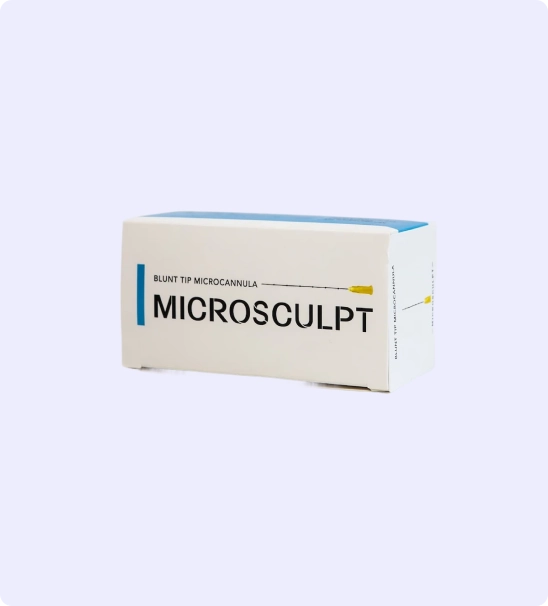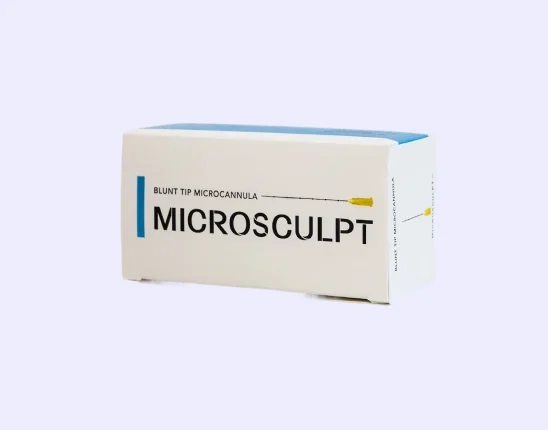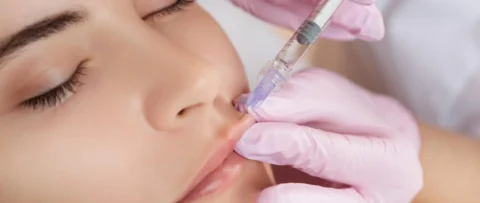Traditional liposuction is a long-standing cosmetic procedure, but it has its fair share of risks and complications. Some of these include botched fat removals, long recovery times, or excessive bleeding. Despite these issues, liposuction remains a popular choice for cosmetic surgery, with 265,209 procedures performed in the United States alone in 2019.
So what makes microcannula liposuction so different? This innovative and high-tech procedure looks to address many of the common issues and complaints that patients and doctors have with traditional liposuction.

INJECTIONS YOUR PATIENTS WILL LOVE! CODE “20OFF” TAKES 20% OFF YOUR FIRST ORDER!
Microcannulas are a tool that every great injector must master. Patients want quick results with no downtime. Our microcannulas are high quality and a fraction of the price of our competitors!
You can create an account here.
The Structure Of A Microcannula Needle
The most significant difference microcannula liposuction has from the usual lipo procedure is the needle used to extract fat. Microcannulas are specially designed liposuction cannulas that have the same inside diameter as the 12-gauge hypodermic needle. They’re some of the smallest needles that we can use for cosmetic surgery and require more delicate handling compared to larger cannulas.
Microcannulas are like blunt-tip cannulas and sharp tip needles, but with a few key differences. Here’s a quick table showing these comparisons:
| Microcannulas | Blunt-tip cannulas | Sharp tip needles | |
| Usage | Liposuction and similar cosmetic procedures | Dermal fillers and similar cosmetic procedures | Almost all procedures, cosmetic or medical |
| Tip design | Rounded | Blunt | Pointed |
| Length | Around the same length as their sharp tip counterparts | Usually longer than their sharp tip counterparts | Considered as the industry standard |
While microcannulas are closely related to blunt-tip cannulas, their most important distinction is in their tubings. Microcannulas have significantly thinner tubing than full-sized blunt-tip cannulas, which allow for easier penetration through skin and fat. This construction is made of the same fully tempered stainless steel used for standard hypodermic needles, which also requires distinct differences in the tip design.
These differences result in two different microcannulas used with liposuction procedures:
- The Finesse microcannula, designed to minimize skin injuries and improved control for the doctor using it
- The Capistrano microcannula, designed to maximize the amount of fat extracted from the microcannula site
While the tip designs may differ slightly with how they work to remove fat, they still follow the primary directive of the microcannula’s intended design: to make the liposuction process more efficient.
Why Use Microcannula Needles With Liposuction?
On top of being a medically innovative alternative to liposculpture, microcannula needles also have several benefits that both patients and aestheticians can enjoy.
1. Improving Patient Experience
A study from the Indian Journal of Plastic Surgery shows that despite a doctor’s best attempts at setting expectations, patient dissatisfaction is still a systemic issue that follows liposuctions. One of the primary factors that trigger this issue is the experience of the patients going into and out of the procedure. Most patients may be totally unprepared for the actual process of liposuction even when properly briefed; and they may translate this feeling into negative receptions of the results, even if they were objectively good.
In particular, needle phobia is a well-documented case that can affect one in ten people, according to an NHS Foundation Trust. The traditional image of large hypodermic needles may induce anxiety in patients, which makes the procedure far more difficult to carry out. With microcannulas, a patient may have fewer worries about the procedure, making the entire process relatively smooth and painless to perform.
2. Accelerated Recovery Times
One of the biggest post-operative concerns patients have with liposuction is the appearance/persistence of swelling, bruising, soreness, or other skin blemishes after the procedure. With traditional liposuction, these issues were usually unavoidable because of the larger design and sharp ends of the sharp tip needles. These sharp edges would pierce through skin, fat, and blood vessels alike, causing minor but noticeable blemishes on the surface layer of the skin.
Microcannulas create narrower incisions and tunnels during the liposuction process, helping the patient heal more rapidly after each procedure. This is true even if multiple sites have been targeted by the liposuction process since the wounds created by the incisions are small and require no sutures.
3. More Efficient Fat Removal With More Eligible Sites
The small structure of microcannulas allows them to reach places that larger cannulas can’t, which allows them to remove more fat. Since the doctor has more confidence in their ability to reach more fat-filled areas causing no injuries to their patient, they can use a microcannula in areas that would be normally impossible to reach. This means doctors can now access areas like the glandular tissue around the breast or previous areas that underwent liposuction with little effort.
This flexibility also means doctors can safely remove more fat from microcannula sites. Needles or cannulas are often burrowed deeper within the skin to avoid any lasting damage to the surface-level tissue and blood vessels, which means more fat remains near the top layer. Microcannulas can be inserted in both fibrous fatty tissue deposits or layers or subcutaneous fat for better fat removal.
INJECTIONS YOUR PATIENTS WILL LOVE! CODE “20OFF” TAKES 20% OFF YOUR FIRST ORDER!
Microcannulas are a tool that every great injector must master. Patients want quick results with no downtime. Our microcannulas are high quality and a fraction of the price of our competitors!

Considerations With Microcannula Liposuction
Despite the relative success that microcannula has compared to traditional liposuction, there are still some considerations that medical professionals need to keep in mind before recommending the process to their patients.
1. Need For Technical Expertise
The microcannula method vastly differs from a traditional needle or cannula treatment because of the delicate structure of the tubing. While this means less strain on the elbows or wrists of the doctor, it’s also a marked departure from the usual force required to insert needles or larger cannulas. Less experienced or untrained practitioners can accidentally bend the microcannula during the surgery, or maneuver it painfully inside their patient.
Many dermatological institutes recommend a certification on microcannula training before attempting to use it for liposuction. These courses can equip any aesthetics practitioner with the skills required to use microcannulas with finesse so they can fully take advantage of its benefits during liposuction.
2. More Time And Effort Needed Per Session
Because microcannulas have smaller inside diameters compared to traditional liposuction needles, they remove less fat per incision and less fat per site. Even with multiple incisions and microcannula sites, microcannulas may underperform compared to larger cannulas and needles in terms of raw fat removed per session.
However, benefits like improved surface fat removal, greater accuracy, and better control during the surgery can translate into long-lasting results.. At the end of the day, doctors still need to give their patients a realistic expectation t with each liposuction session. This is especially critical for patients who have had previous experience with traditional liposuction methods, so they have a clear idea of how long it takes to get results.
3. Microcannular Tumescent Liposuction And Thrombocytopenic Patients
One of the biggest breakthroughs of the microcannula method was the invention of stable tumescent hemostasis. Previously, the wounds left behind by the larger needles and cannulas meant that blood loss was a major complication that could easily arise post-operation. With microcannular tumescent liposuction, patients experience less blood loss and fewer traumas to their blood vessels.
However, doctors should still advise people who have thin blood (thrombocytopenia) that liposuction may not be a medically safe option. Even with the advances in hemostasis and the overall less traumatic process of microcannula liposuction, the risks associated with such a process do not make it a viable method of fat reduction.
Get Quality And Affordable Medical Supplies From FACE Medical Supply
-
 23 gauge 50 mm (2 inch) Microcannulas
23 gauge 50 mm (2 inch) Microcannulas -
 22 Gauge 100 mm (4 inch) Microcannulas.
22 Gauge 100 mm (4 inch) Microcannulas. -
 27 Gauge 38 mm (1.5 inch) Microcannulas
27 Gauge 38 mm (1.5 inch) Microcannulas -
 25 Gauge 38 mm (1.5 inch) Microcannulas
25 Gauge 38 mm (1.5 inch) Microcannulas -
 30 Gauge 25 mm (1 inch) Microcannulas
30 Gauge 25 mm (1 inch) Microcannulas -
 18 Gauge 100 mm (4 inch) Microcannulas
18 Gauge 100 mm (4 inch) Microcannulas -
 25 Gauge 50 mm (2 inch) Microcannulas
25 Gauge 50 mm (2 inch) Microcannulas -
 21 Gauge 50 mm (2 inch) Microcannulas
21 Gauge 50 mm (2 inch) Microcannulas -
 21 Gauge 70 mm (2.75 inch) Microcannulas
21 Gauge 70 mm (2.75 inch) Microcannulas
At FACE Medical supply, we believe in cosmetic procedures that benefit both the practices and their patients. Microcannula liposuction is an innovative, less invasive, and overall more efficient method of fat reduction compared to traditional liposuction.
If you’re looking for specialized cosmetic tools like microcannulas, we offer a selection of needles and cannulas at affordable prices. We pride ourselves on delivering high-quality products with top-notch customer service and strive to continue integrating the newest cosmetic procedures with our products.
Read more: Can Collagen Help With Hair Loss?
Microcannulas make it easier than ever before to give your patients the treatment they need.







